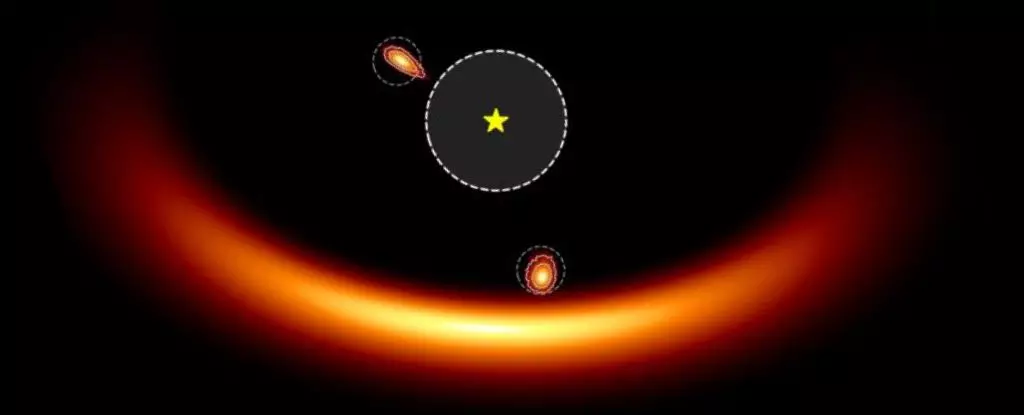In the grand tapestry of the cosmos, the process of planet formation is a remarkable phenomenon, marked by swirling disks of gas and dust encircling nascent stars. These disks serve as the cradle for future planetary systems, and astronomers are keenly focused on unlocking the secrets of this formative process. The James Webb Space Telescope (JWST), a groundbreaking tool in modern astrophysics, is designed to delve into these intricate mechanisms. One of its key objectives includes studying young star systems such as PDS 70, a nearby orange dwarf star approximately 370 light-years from Earth. The ongoing research in this area offers invaluable insights into how planets come into existence.
PDS 70 is noteworthy for hosting two protoplanets, designated PDS 70b and PDS 70c. These young giants are among the few exoplanets that have been directly imaged, with PDS 70b gaining historic recognition as the first known protoplanet to be captured in such a manner. The pioneering observations were conducted in 2018 using the European Southern Observatory’s Very Large Telescope (VLT), which utilized its innovative SPHERE instrument to render a detailed image of this celestial formation. This marked a significant milestone in astronomical research, allowing scientists to investigate the atmospheres, masses, and temperatures of the planets far more precisely.
The JWST recently revisited the PDS 70 system, offering an opportunity to deepen our understanding of these planetary bodies. A new study, led by graduate student Dori Blakely from the University of Victoria in Canada, employed the telescope’s advanced capabilities, specifically the Near Infrared Imager and Slitless Spectrograph (NIRISS). This instrument incorporated a method known as Aperture Masking Interferometry (AMI), which effectively enhanced the resolution of the telescope’s observations. By using a special mask with tiny apertures, researchers were able to capture higher-resolution images that would reveal even more about the conditions surrounding the planets.
The recent findings indicate a significant amount of material surrounding PDS 70b and PDS 70c, lending credence to the idea that these planets are still in the active stage of formation. The authors likened this discovery to viewing a family photo of our Solar System during its infancy—an evocative metaphor that underscores the profound implications of this research. Previously, the light spectrum observed from these planets was interpreted through models tailored for lower-mass stars and brown dwarfs. However, the JWST’s longer-wavelength observations revealed a spectral signature that could not be reconciled with these existing models, suggesting the presence of warm material likely associated with a circumplanetary disk.
This circumplanetary disk is critical for planet formation, as it provides the essential materials needed for the planets to grow larger. This finding illustrates the intricate interactions within the PDS 70 system, emphasizing that the star and its forming planets are competing for the same resources necessary for their development. Being merely 5.4 million years old, this T-Tauri star is vastly pre-main-sequence, and the observations of its surrounding material allow scientists to witness the planet formation process in real-time.
Another exciting aspect of the JWST’s investigation into PDS 70 is the emergence of evidence suggesting the existence of a potential third planet, referred to as PDS 70d. Earlier studies had proposed the possibility of this additional world, but uncertainty loomed over its confirmation. The current research integrates these observations and refines our understanding of this object’s properties, whatever it may be. Should PDS 70d be validated as a planet, it would exhibit markedly different atmospheric compositions compared to its companions, PDS 70b and c. This diversity could enhance our understanding of the complexities involved in planetary formation and evolution.
The exploration of PDS 70 serves as a pivotal moment in our understanding of how solar systems form. By utilizing cutting-edge technology like the JWST, astronomers are provided with unparalleled perspectives into the early stages of planetary systems and the dynamic processes that occur within them. The discoveries made through research on PDS 70 not only enlighten our comprehension of exoplanets but also offer a glimpse into the formative years of our own Solar System. As we continue to investigate these celestial phenomena, we find ourselves at the forefront of unveiling the secrets of the universe, akin to watching a masterpiece being painted in the vast canvas of space and time.


Leave a Reply